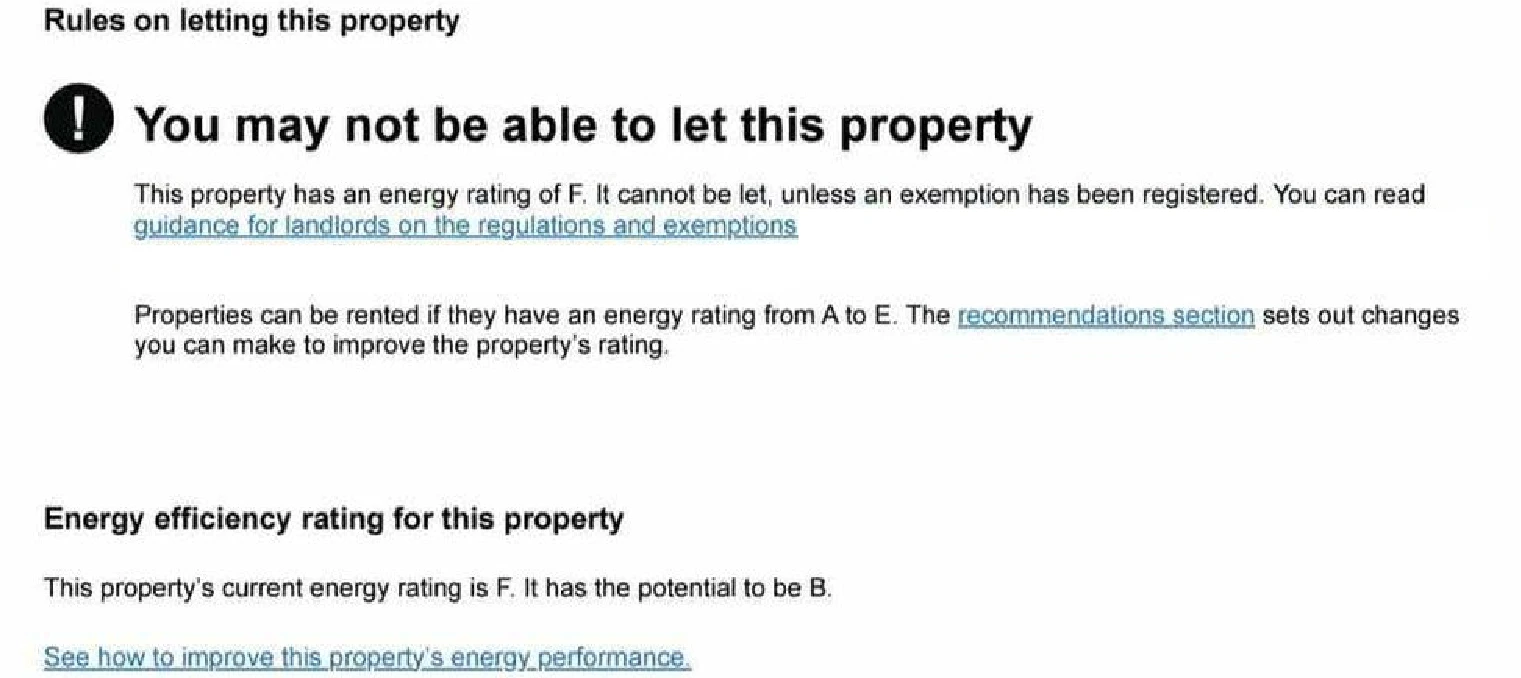Commercial EPC
Everything you need to know about Energy Performance Certificates (EPCs) for non-domestic properties.
Get a Commercial EPC Now
Changes to legislation in 2018 now make it unlawful to agree a new lease for non-domestic properties with an Energy Performance Certificate rating of below an E (i.e. any property with a rating of F or G).

-
How to get a Commercial EPC
ESS Green Skills trained and accredited Energy Assessors can evaluate a property’s energy efficiency and produce a commercial EPC, which displays the current energy rating for that property. Only a qualified Non-Domestic Energy Assessor (NDEA) can produce an EPC for a commercial property. If improvements are recommended, they can advise on suitability and viability for your property.
-
What is an Energy Performance Certificate (EPC)?
An EPC for a commercial property shows the energy performance of the building. The rating is displayed from A+ (most efficient) to G (least efficient). Properties also receive a score based on carbon dioxide (CO2) emissions, ranging from under 0 (net zero) to over 150 (least energy efficient).
-
How much does a commercial EPC cost?
The cost of a Commercial Energy Performance Certificate (EPC) with Essential Green Skills starts from £150. Prices can vary depending on factors such as the size, age, and complexity of the property. Larger or more complex buildings may require more in-depth assessments. For an accurate quote specific to your property, please contact us directly, and our team will provide tailored pricing information.
How is the Rating Calculated?
The rating is calculated following a non-invasive assessment of the property, typically examining
-
Heating
-
Cooling
-
Ventilation
-
Activities of a Zone
-
Building Construction
-
Lighting
-
When do I need an EPC?
It is a legal requirement to have a valid EPC when a property is sold, let or constructed. Minimum energy efficiency standards apply to rental properties and are expected to become stricter in the future.
-
How long does an EPC last?
An EPC is valid for 10 years or until a newer EPC is produced for the same property. Existing occupiers and tenants do not require a new EPC unless they sell, assign, or sublet their interest in a building. Once an EPC expires, it is no longer legally binding.
-
How can I view my properties EPC?
For properties in England, Wales, and Northern Ireland, find your EPC on the Ministry of Housing, Communities and Local Government (MHCLG) Energy Performance of Buildings Central Register. For properties in Scotland, find it on the Scottish Energy Performance Certificate Register on the Energy Saving Trust’s website.
What does an EPC show?
A commercial EPC includes five main sections:
- Energy Efficiency Rating: Current and potential ratings (A+ - G).
- Comparison to Other Properties: Comparison with typical existing and newly built properties.
- Energy Performance Breakdown: Main heating fuel, building environment, assessment level, and emission rate.
- Recommendation Report: Suggested improvements to enhance energy efficiency, marked as low, medium, or high impact.
- Assessor and Accreditation Details: Contact information for the Energy Assessor and their accreditation body.

Minimum Energy Efficiency Standards in the Non-Domestic Private Rental Sector
Failure to comply with MEES could lead to a fine
-
What are MEES?
The Energy Act 2011 includes provisions affecting property owners, with MEES being the most significant, aiming to improve the energy efficiency of the least efficient properties.
-
Why do I need to comply with MEES?
Non-compliance can result in fines up to £15,000, linked to the ratable value of the property. Exemptions exist and can be advised by a non-domestic energy assessor.
-
Legislative Changes in 2018
As of April 2018, it is unlawful to agree to a new lease for non-domestic properties with an EPC rating below E (F or G).
- Estimated 20% of non-domestic properties may have an EPC rating below E, requiring upgrades to meet minimum standards to be legally rentable.
Key Points on MEES
-
MEES is now law.
-
Up to 20% of non-domestic properties in England and Wales could have an F or G rating.
-
Since April 2018, regulations apply to new leases and renewals.
-
From April 2023, all privately rented properties must meet minimum standards.
-
Minimum standard expected to rise to EPC band D in 2025.
-
Minimum standard expected to rise to EPC band C in 2027.
-
By April 2030, minimum standard will be EPC band B.
Who does MEES apply to?
All non-domestic properties being newly let, and lease renewals, need to comply with Minimum Energy Standards.
MEES applies to new lettings and lease renewals on or after the 1st April 2018. Landlords/property owners need to ensure that their properties meet MEES before a lease is granted. However, as of 1st April 2023 all privately rented property will be required to meet the minimum standards.
Exemptions
The government provides certain exemptions where landlords may be exempt from complying with MEES. However, all exemptions typically have a time limit and require proper documentation.
Landlords can qualify for an exemption under the following conditions:
-
All Cost-Effective Improvements Implemented
If all recommended cost-effective energy efficiency improvements have been made but the property still does not meet the required energy efficiency rating, the property owner/landlord will be exempt for 5 years. This must be verified by an NDEA.
-
Seven Year Payback Rule
If the recommended improvements do not meet the Seven Year Payback Rule, meaning the cost of improvements cannot be recouped through energy savings within seven years, the landlord can claim a 5-year exemption. This requires documented evidence, including quotes and calculations, to be assessed by an NDEA.
-
Lack of Third-Party Consents
If necessary consents to undertake the energy efficiency improvements (from tenants, lenders, planning authorities, or superior landlords) are denied despite reasonable efforts, the landlord will be exempt for 5 years. If the consenting party (e.g., a tenant) vacates the property, this exemption may need to be reassessed.
-
Property Devaluation
If a qualified chartered surveyor (RICS registered) determines that the required energy efficiency improvements would reduce the market value of the property by more than 5%, the landlord can be exempt for 5 years. This devaluation must be documented in a formal report.
-
Recently Becoming a Landlord
In cases where someone unexpectedly becomes a landlord, such as through inheritance, a temporary 6-month exemption can be claimed. This allows the new landlord time to comply with MEES standards.
Documentation for Exemptions
To qualify for any exemption, landlords must register the exemption on the PRS Exemptions Register. Sufficient documentation must be provided to support the exemption claim, and failure to properly document and register can result in penalties.

